Use a special tool or homemade newspapers and hobster? Describe working methods to wash the blots.
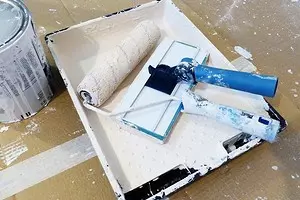
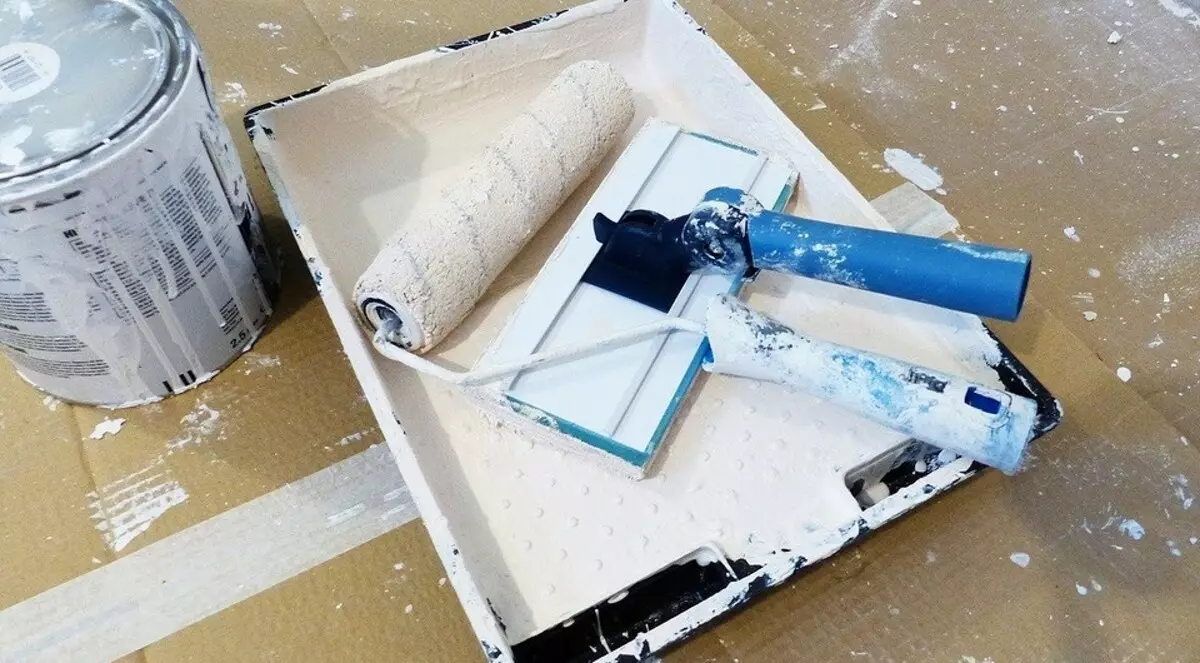
Remove the old spicy layer from the ceiling surface is easy, but very laborious. It is necessary to work in an uncomfortable posture, since the base is above the head. The master gets tired, spends a lot of time to work. We'll figure it out how to wash off whitening from the ceiling quickly and with minimal labor costs.
All about the removal of chicken paste
When you need to doPreparation for work
Four efficient ways
1. Wet Cleaning
2. Application of washes
3. Newspapers and Clay
4. Dry stripping
When removal is necessary
Poor is called a layer of lime or chalk applied to the ceiling base. It must be removed before finishing works so that the new design is well based on. If it is supposed to assemble a tension or suspended design, it is not necessary to remove the firmly holding old decor. They only remove those layers that were cracking and saved. Over time, they will fall and turn out inside the tensioned cloth. They can spoil it.
In what cases the finish is removed
- Before staining the paint of the water-level type. She "will gather" lime or chalk into ugly lumps. The surface will be corrupted.
- If a fungus appeared or mold. The finishing layer is removed, the base is washed, treated with disinfecting drugs.
- Before sticking wallpaper or tiles from polystyrene foam. Due to insufficient adhesion, cladding will be bad.
The masters remind that it is possible to shake over the old layer. Provided that it is not too thick, does not crack and does not fall off. There is one important point. New and old coating should be the same type. That is, either chalk or lime. If nothing is known about the old finish, you can easily determine its composition. To do this, the coating is splashing with water. If the drops are not absorbed, it means that it is a lime, the chalk absorbs the liquid.
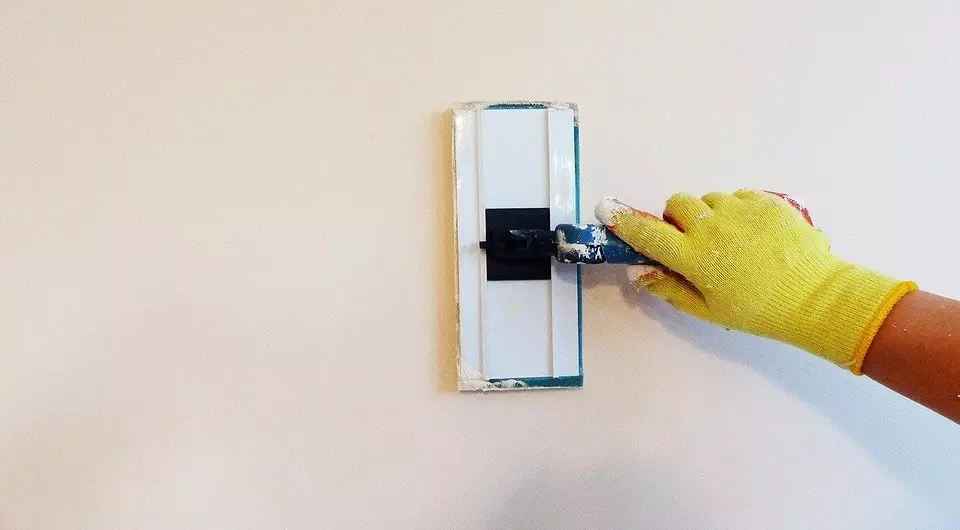
How to prepare for the removal of whitewashing from the ceiling
There are several ceiling cleansing techniques. In any case there will be a lot of dirt and dust. Therefore, it is necessary to prepare a room for work.Process preparation
- We carry out furniture, decor items, things. It is advisable to completely free the room.
- All that can not be taken, cover with a dense film. So that it does not move, fix it with scotch. On the floor, too, a stele film or cardboard, tight paper, newspapers.
- Windows and window sills are tightened with a film, fix it with scotch.
- Deafling the room. To work in the dark, we prepare a portable lamp or a luminaire on batteries.
- If there are no doors to the room, we drag the opening with a tight plastic, make a passage in it. Under the door put a rag. We will be watched by water to wipe the legs.
- Cooking overalls from dense tissue. The sleeve should be long, pants, headdress, safety glasses. If dry cleaning is assumed, there will be a lot of dust. It will take a respirator or a medical mask to protect the respiratory organs. You can take homemade gauze.
To work it was convenient, you will need a stand. It can be a steady bench, an old table or a stepladder. Her height should be such that the worker freely deliver to the ceiling, while not flexioned and did not pull his hands.
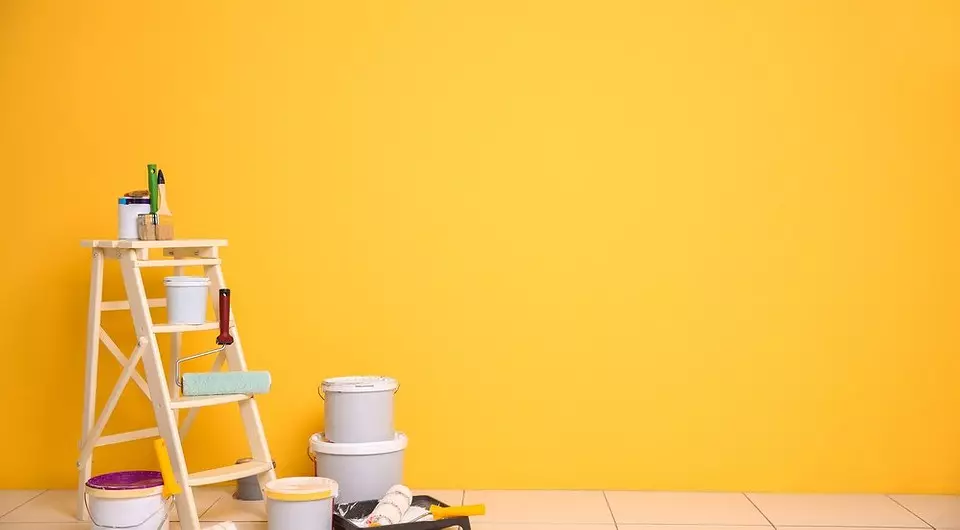
Four ways to remove the coating
In most cases, it is necessary to remove the finish layer. The easiest way to do is if it is chalk and is applied by a thin layer. Then you can just wash off. The erosion is carried out with warm water and no difficulties represent. The surface is wetted, then a clutch with a wet sponge, regularly replacing the contaminated liquid. Chalk is easily dissolved and washed off. It is more difficult to cope with the lime. It holds hard on the ground. We offer effective techniques how to quickly clean the ceiling from the blots.1. "Wet" way
Very simple technology that allows you to quickly clean the lime. Its essence is to pre-twist the layer of finishing. Then consider from the base. For wetting it will take a roller on a long handle with a special tray or sprayer, preferably with a large reservoir. To remove the old layer, a spatula will be required. The average metal tool with a sharp edge is suitable. The stripping procedure is simple and executed according to the following plan.
Wet stripping plan
- Moving the whitewash. For this, it moisturizes it. We pour warm water into the tray, wet the roller, squeeze it slightly, roll the device on the surface. You can use a spray gun. Moisturizing the basis is moderately, it should not drip off.
- After all the base is moistened, we are waiting for 10-15 minutes and repeat the procedure. Double processing gives the best result. Painting well swells.
- We take a spatula and spend it on the basis. Lime is removed by the reservoir. If this is not the case and the tool flows the liquid, we are waiting for some time. The scope process has not yet ended. Then remove the entire finish.
- We take a rag or sponge, wash the purified base.
- We are waiting until it dry out. Tog the dry surface with your finger. If white traces remain, mine again.
"Wet" way, how to remove whitewashing from the ceiling, simple and efficient, but gives a lot of dirt. To this must be prepared. Cover the floor and other surfaces with waterproof materials and securely fix them so as not to be moved.
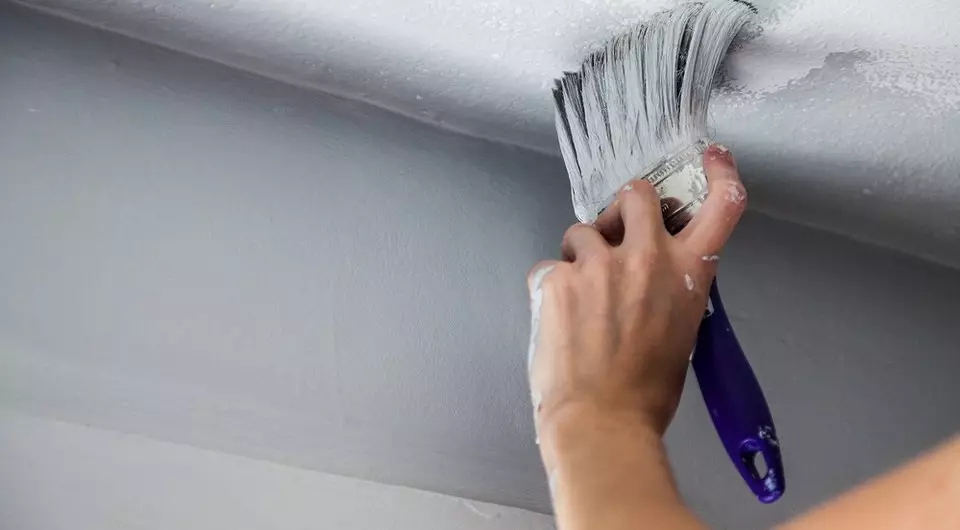
2. Special bow
Manufacturers of repair makers produce washes that destroy the old finish. After that it is easier to consider it. It is important to choose the drug correctly and get acquainted with the instructions for its use.How to clean wash
- Cooking a solution to work, if specified by the manufacturer. We spray the mixture on the base.
- We are waiting for the time specified in the instruction so that the means for removing the whitting from the ceiling transformed lime. It will begin to fall behind the stove, turn into an easily removable crust.
- We clean the basis with a spatula or other suitable tool.
- My stove. We are waiting until it is dry.
Chemical washing is effective, but it is not always used. Perhaps it is not on sale or the price is too high. You can make an analogue of the drug with your own hands. We have collected several such recipes.
How to make a wash with your own hands
- On five liters of water, 4-5 caps of any foam for a bath and a tablespoon of acetic essence will be required. Well wash off the chalk coating.
- In 10 liters of hot water to dissolve 100 g of calcined soda and 200 g of soap chips. Mix actively, let cool. Means to strain. Works effectively on lime.
- 10 liters of warm water take 1 kg of cook salt. To interfere until completely dissolved.
Homemade compositions are used in similarly purchased. They are applied to the ceiling surface. Waiting, while they are absorbed, then removed the detached material.
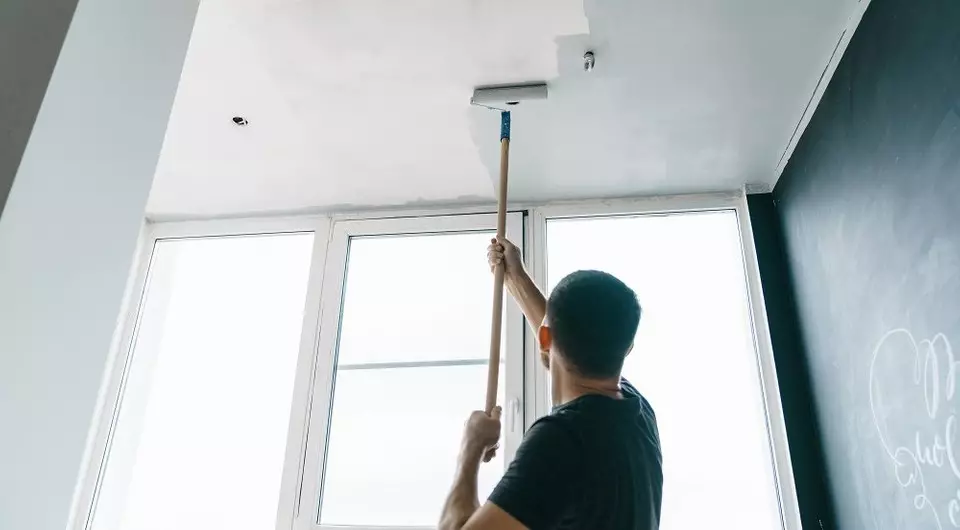
3. Newspapers and Clay
There is another technique how to blur the ceiling from whitewash quickly and without a large amount of dirt. To do this, you will need a stack of newspapers or any other large sheets of paper. You still need homemade holter or the cheapest wallpaper glue. Clean the lime so.How to act
- Cook a hubble. For a solution of medium consistency, we take 100 g of flour per liter of water. The part is molded into the container, add flour and thoroughly stir. The rest of the water is poured into a saucepan or bucket, put it on fire. After boiling, we pour the flour solution and mix until the homogeneous consistency is obtained. The consistency of the finished cestile reminds liquid dough. We leave the mixture for cooling.
- We take a newspaper sheet, we abundantly lubricate it with a cooled honesty. Unproyed leave only one corner. The smelter with a mixture is pressed to the ceiling, we can crack. Thus, we rush the entire surface.
- We are waiting until Cleaster dry. Periodically check, touching the hand of the newspaper.
- When the paper is completely dry, strongly stretch it for the raw corner. We try to disrupt the entire newspaper at once with a sharp accurate movement. Lime layers will remain on paper.
- We are blurred freed from finishing the basis of a cloth fixed on the mop.
The wallpaper glue comes in the same way. It is bred in accordance with the instructions, then lubricate the newspapers, stick them on the ceiling coating. Important moment: Wet paper will not remove the lime. We must wait for complete drying.
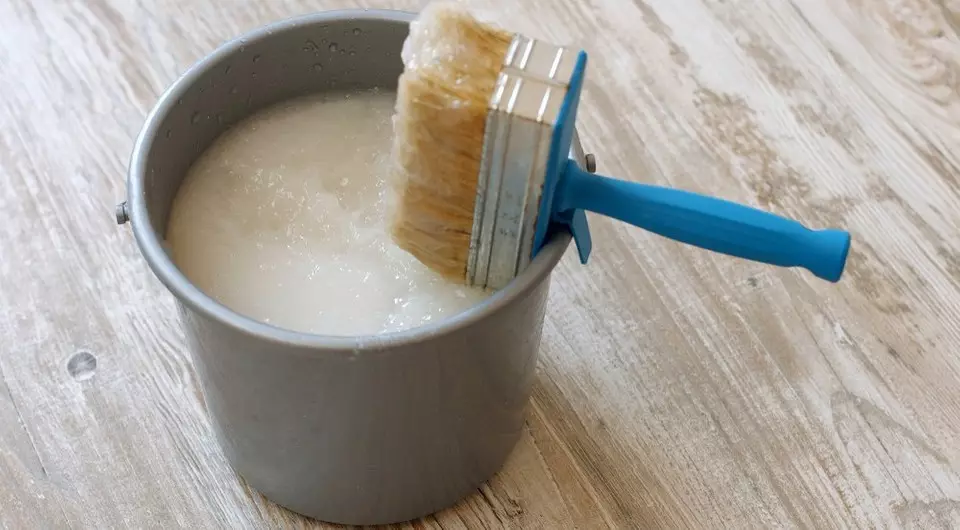
4. "Dry" way
The simplest method of removing the coating, and it is the most dusty. A sharp spatula is scored from the plate. To work it was more convenient, make a homemade device: scraper with a container fixed on it. It takes a narrow spatula and plastic box (bath) or just a package. In the handle of the tool, the two holes are drilled through which the wire is made. It fixes the container on the sphate.
Thus, the entire lime scratched from the base falls into the container, from where it is easier to clean. But dust still turns out very much, so it is not recommended to work without a means of protecting the respiratory. In order for dust particles faster thanced, it is recommended to spray water from time to time. At the end of the work, be sure to take a bath or shower. Lime dust particles penetrate the clothes and can cause irritation or allergic reaction.
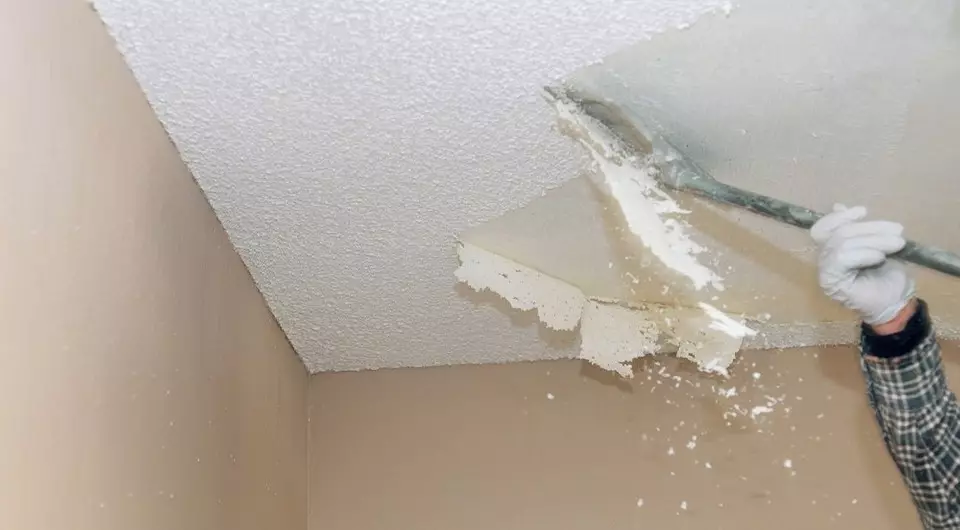
Clean the ceiling surface from the old finish is easy, provided that the technique is chosen correctly. Each of those that we described, effective, but has drawbacks. Select the appropriate way to consider individual conditions and opportunities to spend the minimum of forces and means.
